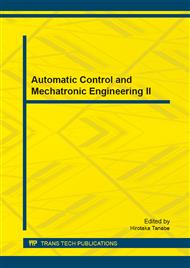[1]
Haiyan C, Xinhua Z, Yin Y. Research on residual chlorine decay model of reclaimed water network[C]. Electronics, Communications and Control (ICECC), 2011 International Conference on. IEEE, 2011: 3899-3902.
DOI: 10.1109/icecc.2011.6067987
Google Scholar
[2]
Clark R M, Sivaganesan M. Predicting chlorine residuals in drinking water: Second order model [J]. Journal of water resources planning and management, 2002, 128(2): 152-161.
DOI: 10.1061/(asce)0733-9496(2002)128:2(152)
Google Scholar
[3]
Rossman L A, Clark R M, Grayman W M. Modeling chlorine residuals in drinking-water distribution systems [J]. Journal of environmental engineering, 1994, 120(4): 803-820.
DOI: 10.1061/(asce)0733-9372(1994)120:4(803)
Google Scholar
[4]
Chang T, Brdys M A, Duzinkiewicz K. Decentralized Robust Model Predictive Control of Chlorine Residuals in Drinking Water Distribution Systems[C]. ASCE, 2004, 1-10.
DOI: 10.1061/40685(2003)255
Google Scholar
[5]
Duzinkiewicz K, Brdys M A, Chang T. Hierarchical model predictive control of integrated quality and quantity in drinking water distribution systems [J]. Urban Water Journal, 2005, 2(2): 125-137.
DOI: 10.1080/15730620500144043
Google Scholar
[6]
Pawlowski A, Guzmán J L, Normey-Rico J E, et al. Improving feedforward disturbance compensation capabilities in Generalized Predictive Control[J]. Journal of Process Control, 2012, 22(3): 527-539.
DOI: 10.1016/j.jprocont.2012.01.010
Google Scholar
[7]
Su B, Chen Z, Yuan Z. Multivariable decoupling predictive control with input constraints and its application on chemical process[J]. Chinese Journal of Chemical Engineering, 2006, 14(2): 216-222.
DOI: 10.1016/s1004-9541(06)60061-x
Google Scholar
[8]
Ginhoux R, Gangloff J, de Mathelin M, et al. Active filtering of physiological motion in robotized surgery using predictive control[J]. Robotics, IEEE Transactions on, 2005, 21(1): 67-79.
DOI: 10.1109/tro.2004.833812
Google Scholar
[9]
Peng L, Jiang W, Bei G, et al. Multi-tenant behavior measurement based on multi-variable generalized predictive control[C]/Information Science and Digital Content Technology (ICIDT), 2012 8th International Conference on. IEEE, 2012, 1: 24-27.
Google Scholar
[10]
Shi W, Ma Y, Chen Y, et al. Adaptive fuzzy generalized predictive control for a class of unknown parameters multivariable linear system[C]/Control and Decision Conference (CCDC), 2012 24th Chinese. IEEE, 2012: 2691-2695.
DOI: 10.1109/ccdc.2012.6244427
Google Scholar
[11]
Normey-Rico J E, Camacho E F. Multivariable generalised predictive controller based on the Smith predictor[J]. IEE Proceedings-Control Theory and Applications, 2000, 147(5): 538-546.
DOI: 10.1049/ip-cta:20000590
Google Scholar
[12]
Ho Y K, Mjalli F S, Yeoh H K. Centralized vs decentralized adaptive generalized predictive control of a biodiesel reactor[J]. Asia‐Pacific Journal of Chemical Engineering, (2012).
DOI: 10.1002/apj.1638
Google Scholar


